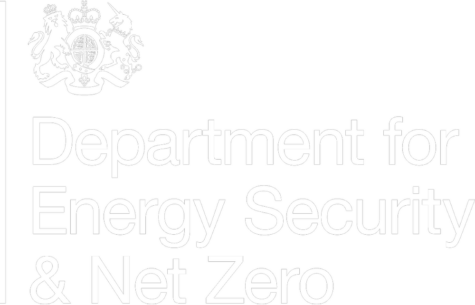At a glance
To reach Net Zero by 2050 in the UK, it is necessary to entirely decarbonise UK homes. SHDF provides funding in a series of waves to social housing landlords (local authorities and housing associations) in England, to improve the energy efficiency of their homes. DESNZ commissioned IFF, working with partners Technopolis and BRE, to evaluate how SHDF Wave 1 was delivered and how learnings could inform future waves.
In summary the Wave 1 process evaluation has shown that both social housing landlords and residents were satisfied with the installation of their energy saving measures and reported improvements to issues they previously experienced in their home. However, both the pace and volume of installations did not meet initial expectations.
About the client
The Department for Energy Security and Net Zero (DESNZ) was established in 2023. It is a government department that is responsible for energy security, protecting billpayers and reaching net zero.
Challenges and objectives
In 2019, the UK legislated to reduce greenhouse gas emissions to Net Zero by 2050. The UK has some of the oldest and least energy efficient homes in Europe. Thus, to reach Net Zero, it is necessary to almost entirely decarbonise homes. SHDF Wave 1 saw £179 million of funding directed to social housing landlords to improve the energy efficiency of social housing in England through the installation of energy efficiency measures across the country. Installations occurred between Spring 2022 and Spring 2024.
This process evaluation of Wave 1 assessed the delivery and success of the installation of energy saving measures, and also identified areas for improvement for future waves of SHDF.

Solution
The evaluation adopted a theory-based approach, underpinned by a Theory of Change. A range of primary and secondary research was conducted to inform the Wave 1 process evaluation, including:
- Research with social housing residents including a survey of 1,498 households that had received installations, and interviews with 150 residents.
- Research with installers, namely interviews with 37 companies responsible for installing measures in properties.
- Analysis of a range of management information, including project bid data, scheme monitoring data and statutory data on social housing landlords and their homes.
- Our partners also conducted research with social housing landlords, scheme delivery stakeholders, and fuel poverty analysis.
This wide-ranging approach to the evaluation enabled robust and reliable conclusions to be drawn on how Wave 1 was delivered.

Impact
The evaluation identified key enablers and evidence of successful design and delivery including:
- Alignment of the Wave 1 scheme with social housing landlords’ decarbonisation plans, supporting the acceleration of delivery and improving quality of measures.
- Refinements to the Change Control Process from the previous Demonstrator scheme enabled quicker decisions and better project oversight.
- The mandatory PAS 2035 standards (which set out best practice for energy retrofit in existing homes) helped to ensure high quality installations.
- Localised projects enabled bulk savings in materials, logistics and labour.
Further to this, evidence from both social housing landlords and residents identified a number of key positive outcomes following the installation of energy saving measures:
- Energy efficiency improvements considerably reduced the reported number of problems in homes post-installation.
- Over four in ten residents with completed installations reported that they had reduced their gas or electricity use.
- As seen in the infographic below, two thirds (67%) of residents reported they were satisfied with the overall installation process.

However, the evaluation also identified some aspects of the design that negatively impacted the process. These included:
- Several social housing landlords felt that the application process requirements were onerous and, given the short bid timescales, that the process favoured more experienced or larger applicants.
- Project monitoring was a burden for some social housing landlords, who considered it disproportionate to the size of funding.
Additionally, Wave 1 experienced considerable delays to delivery, with the following contributing factors:
- Labour shortages in the retrofit industry, particularly installers trained in PAS 2035 standards.
- Unanticipated rising costs due to above expected inflation levels, affecting both labour and materials.
- A broader lack of knowledge regarding retrofit standards and accreditation requirements, among social housing landlords and those involved in the installation process.
- Residents refusing to give access to their properties.
Despite challenges with delivery, this research showed that Wave 1 of SHDF was of value to both social housing landlords, who would have otherwise delivered retrofit at a smaller scale and possibly lower quality, and to residents, who were generally satisfied with the installation of measures and reported improvements to issues previously experienced in their home. Learnings from the process have already been taken forward, with – for example – the Wave 3 scheme adapting the application process to make it more suitable for smaller social housing landlords.
“The waved approach to programme delivery, and the associated evaluations, places a strong focus on delivery learnings that can be taken forward in future schemes. We’ve been delighted to see how the evaluation findings have impacted and enhanced subsequent SHDF wave design, ensuring that social housing landlords and their residents can fully leverage the funding available. ”
Andrew Skone James, Director,
IFF Research





